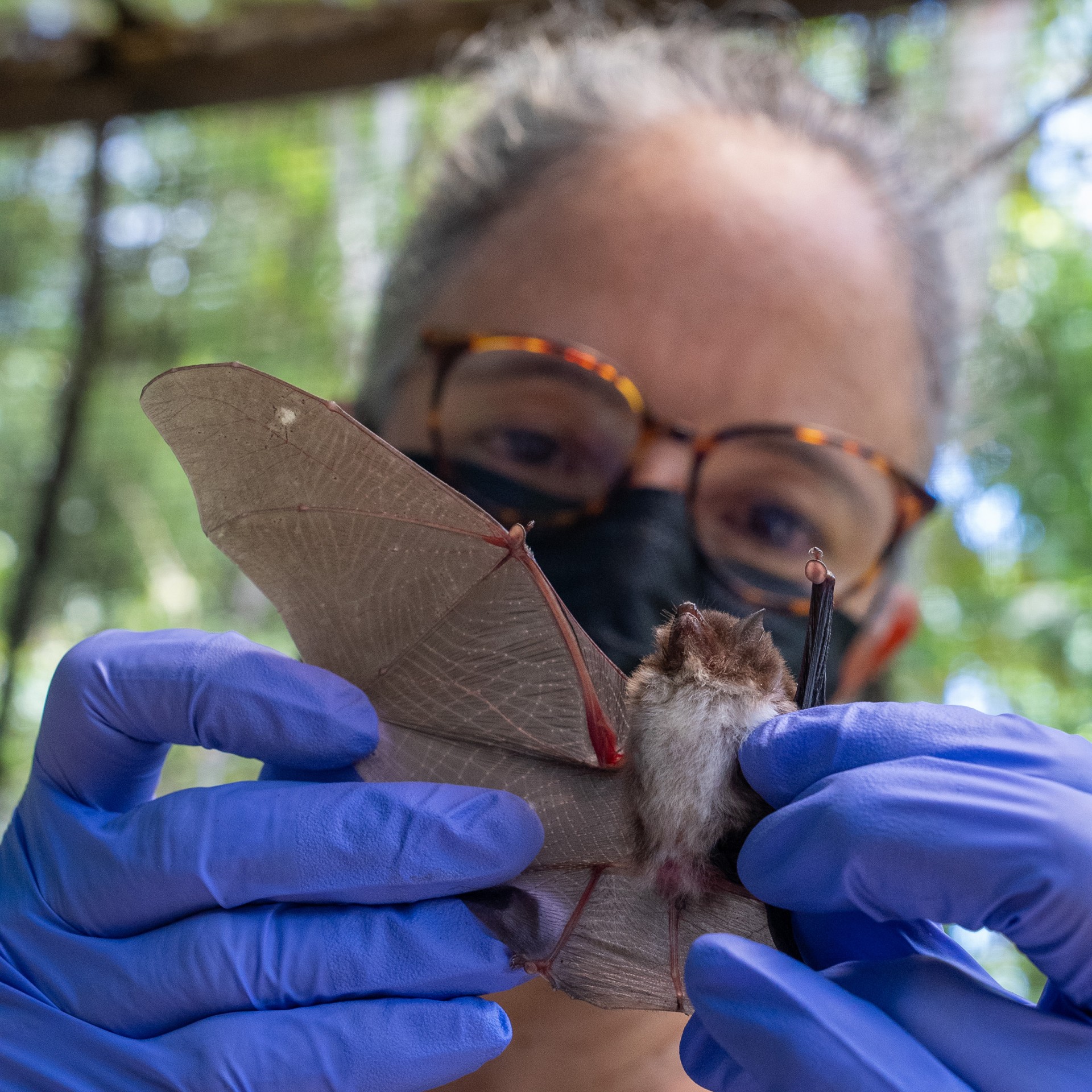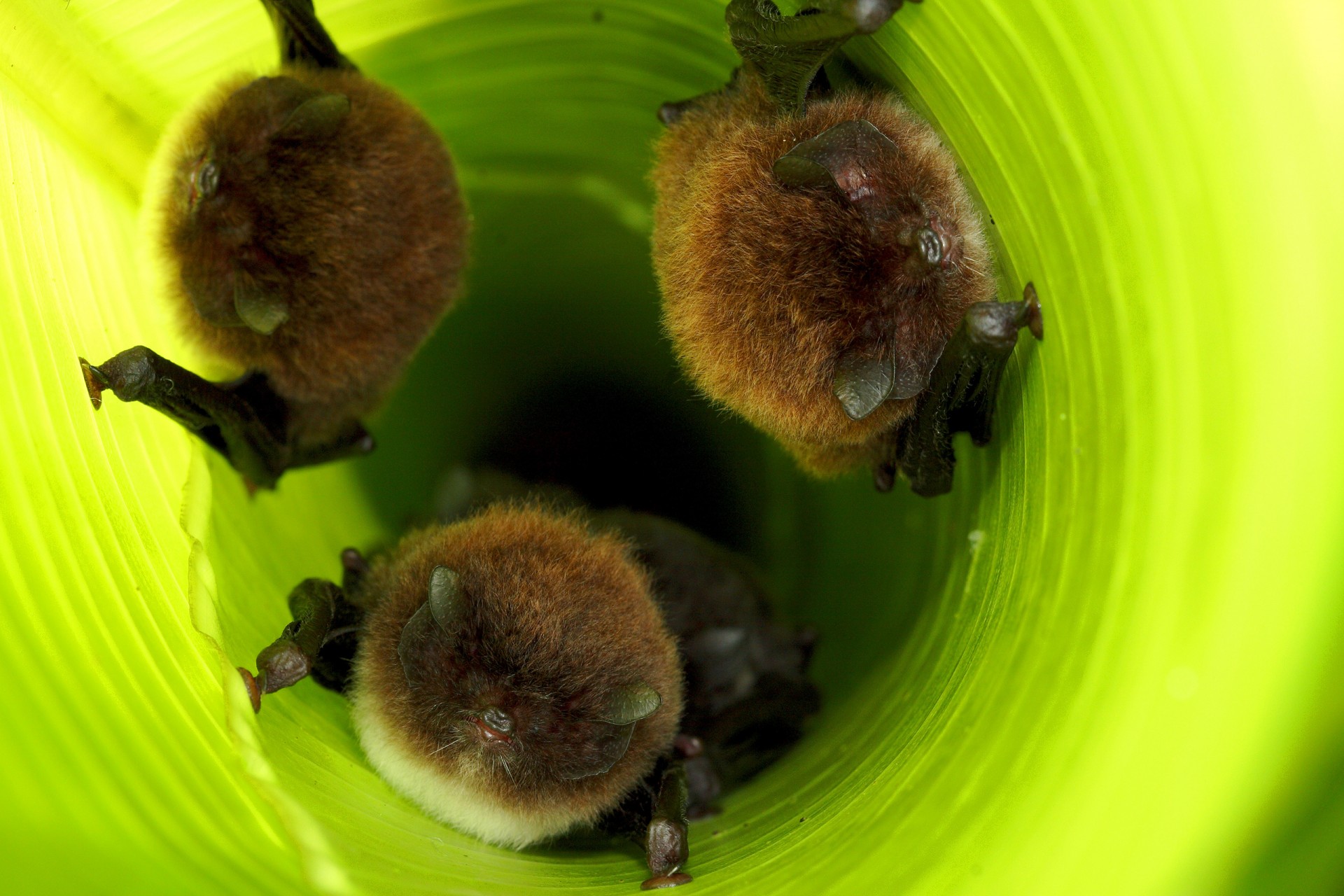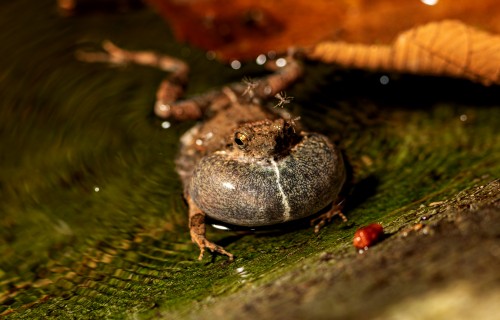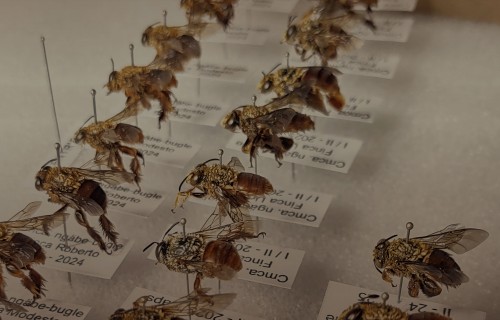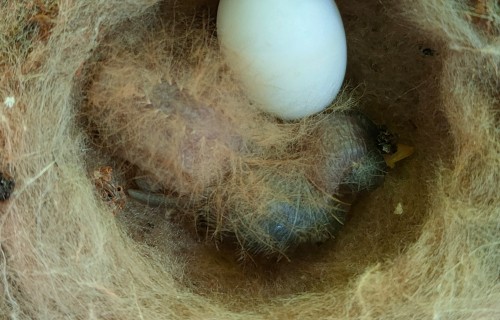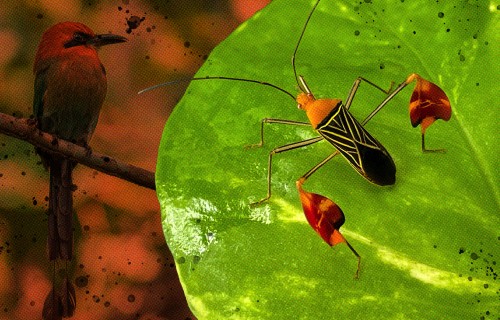A comparison of colorful hamlets
from the Caribbean challenges ideas
about how species arise
Food calls
Hungry bats: Listen up
By: Beth King
Spix’s disc-winged bats shrieked when they were first shown mealworms, a new food for them. Were they alarmed, or were they communicating their excitement to their fellow bats?
What has suction cups on its feet and sleeps in a tube? Hint: it eats jumping spiders, leafhoppers and flies. It’s Spix’s disk-winged bat, one of the smallest bats in the American tropics. And it is probably the first bat species to be added to the list of animals that make unique food calls.
Just as we humans ring a dinner bell or share selfies at our favorite restaurant, other social animals grunt or squawk to announce food finds to their families and friends.
To stick together, Spix’s disc-winged bats talk to each other a lot. They live in tightly knit groups of 2 or 3 individuals that sleep together inside young, rolled-up leaves of plants in the ginger family. The ginger leaves unroll as they grow, so the bats are forced to find new leaf tubes to sleep in almost every night.
Biologists at the Smithsonian Tropical Research Institute’s Bat Lab in Panama noticed that when captive bats were given mealworms, a food that they hadn’t tried before, they shrieked!
Maybe this was a food call. They did two simple experiments to find out. In the first experiment a speaker played recordings of other bats as they chewed their food, made purported food calls, as well as white noise and silence, for comparison. The bats were allowed to fly inside a tent, and researchers recorded their behavior as they broadcast food calls and other sounds.
Gloriana Chaverri, STRI Latin American Scholar and Research Associate from the University of Costa Rica, told us “Just as we suspected, the animals approached the speaker when we played the food calls.”
Gloriana Chaverri, associate professor at the University of Costa Rica and STRI research associate holding a Spix’s disc-winged bat. Look carefully to see the suction cups on its wings.
Credit: Ana Endara/STRI
In the second experiment, they offered mealworms to individuals that had never tried them before to see if, when they hear calls associated with a food source, they would eat it. And indeed - when they heard the food calls, the bats gobbled down the worms.
“At first, the bats remained still and tense, ignoring the food. But the moment they heard the food calls, it was as if a starting whistle had blown—they immediately sprang into action and began eating,” said Gloriana Chaverri.
Rachel Page, staff scientist (foreground) and Gloriana Chaverri (center), associate professor at the University of Costa Rica and STRI research associate, sharing stories about their work with visitors.
Credit: Jorge Aleman/STRI
“Given that disc-winged bats show such strong social cohesion in their search for new roosts, and that acoustic signals play a key role in these coordinated searches, it is likely that the foraging behavior of this bat is socially coordinated, and that this coordination takes place through acoustic signals,” stated STRI Staff Scientist, Rachel Page.
Tightly knit groups of 2 – 3 Spix’s disc-winged bats (Thyroptera tricolor) sleep in tubes formed by young leaves of plants in the ginger family. When the leaves open, they are forced to look for another, rolled up leaf to sleep in.
Credit: Christian Ziegler
The experiments conducted in this study led researchers to think these shrieks really are food calls, which may be important to alert other members of their group when there is food. But they also have more questions like: when and why do the bats emit these calls in the wild? The answers will reveal more about the fascinating social lives of bats and how yet another animal species shares important information about food.

